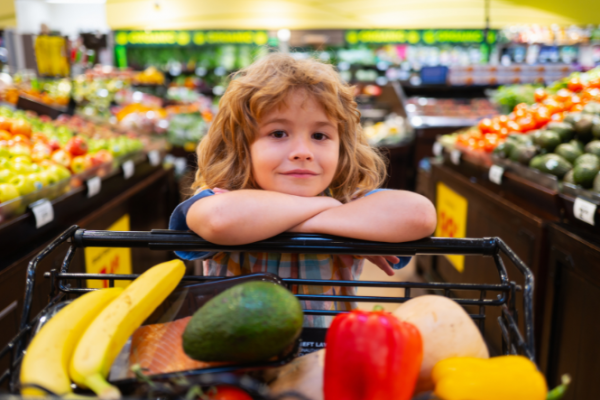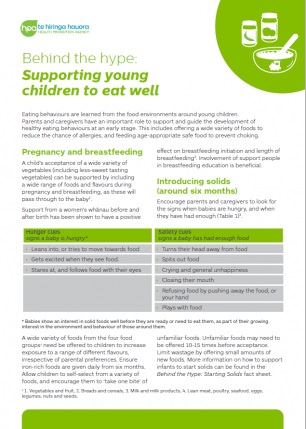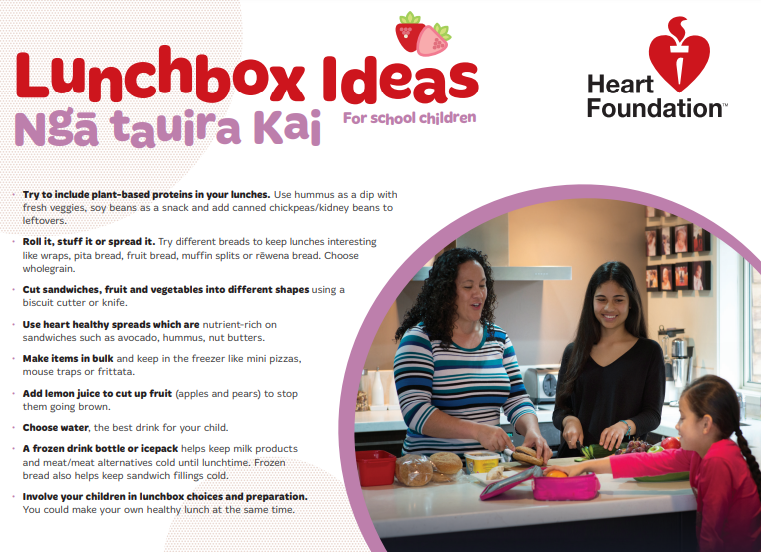1. Get them involved
Get your child to help with the supermarket shopping – ask them to pick the freshest fruit, find which aisle the eggs are in, or choose a flavour of yoghurt.
At home, ask them to help prepare dinner with you – this can be as simple as measuring ingredients or washing vegetables. Older children can take responsibility for planning a family meal once a week and taking their turn being head chef in the kitchen.

Image credit: Canva
2. Have meals at times that suit children
Younger children may have to eat a lot earlier than you normally would, but it’s worth making the effort to sit and eat with them and chat about their day. Which leads us to the next point…
3. Make dinner time around the table a priority
Busy schedules can make for busy evenings but try and prioritise family meals together at the table – even if it’s only a few times every week. Turn off cell phones and the TV and enjoy one another’s company. Many families make Sunday lunch or dinner a ritual – a habit that might even carry over into adulthood!
4. Lead by example
Children are experts at watching and learning from adults. If they see you enjoying a balanced diet it can have a positive influence on their attitude to food. Try and provide a wide variety of healthy kai for the whole whānau to choose from. When they see you enjoying something new, it can encourage them to try it too.
5. Keep offering
Encourage your child/tamaiti to taste a wide variety of different foods. It can take a few attempts for them to get used to new flavours and textures, so don't be surprised if they don't like it at first. You can't force your child to eat but by encouraging them to be adventurous they may one day surprise you by eating – and enjoying – a previously unloved vegetable or fruit. Picky or fussy eating is common in young children – read more here.
6. Let them choose
Rather than you deciding what the whānau eats each night, consider letting them choose the evening’s meal (or lunch). You could offer an ‘either/or’ – pasta and veges OR homemade chicken wraps. A variation on this is to let everyone ‘assemble’ their own dinner. Put out the wraps, the chicken, the lettuce, carrot, tomato and cheese and let them stack it up themselves.
7. Try a theme night
If your child is reluctant to try new food, organise a theme night where everything you serve is from one country, for example, tacos and burritos for a Mexican-inspired fiesta. If your child is older, get them to find out a few fun facts about the country or local food to share during dinner. Decorate the table with some homemade items like hand-coloured flags, or dress to the theme. Make mealtimes fun!
8. Provide healthy snacks
It’s not just at meal times you need to offer healthy food – you should also offer snacks that are low in fat, salt and sugar. If you’re stuck for ideas, there’s a great list of healthy small meals and snacks here.(external link)
9. Grow your own produce
Whether you have a balcony or small space, or a large garden, involve the whānau in planting seedlings, tending them and enjoying the ‘fruits’ of their labour! Many neighbourhoods have community gardens where, if you help out, you can enjoy a bounty of lemons, seasonal fruit like feijoa and fresh veges like spinach.
10. The occasional treat is okay
Just like most adults, children can enjoy a ‘treat’, such as an ice cream, chocolate or a piece of cake. The occasional treat, as part of a balanced diet, can help your child learn foods are not always ‘good’ or ‘bad’ but it’s more about how much, or how many times a week we eat certain foods that make them less healthy choices for us.








